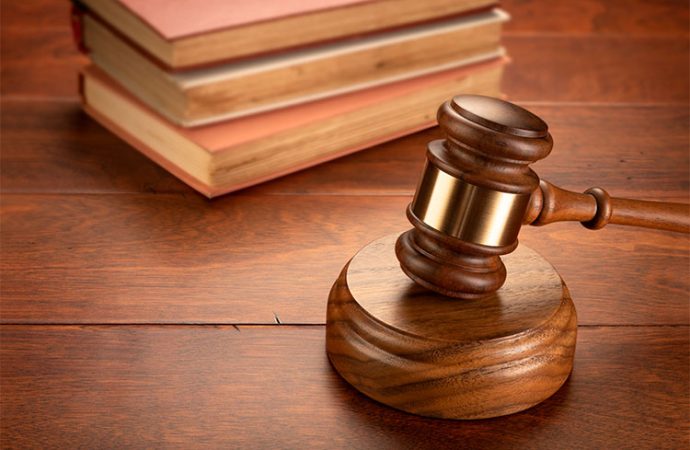Author Recent Posts Asfand Yar Khan Latest posts by Asfand Yar Khan (see all) Outcomes of the Shanghai Cooperation Organisation Heads of Government Summit – October 28, 2024 Deliberations and Outcomes of the 79th Session of the UNGA – October 11, 2024 SCO in Pakistan: Can it bring Normalcy in Indo Pak Relations? – September
The friction between two pillars of the state; legislature and the judiciary, has resulted into a legislation after the Supreme Court (Practice and Procedure) Bill 2023 became law. Further, on May 26, 2023, President Dr. Arif Alvi green signaled the Supreme Court (Reviews of Judgements and Orders) Bill, 2023 presented by Private Member MNA Shaza Fatima. According to the statement of the objects and reasons of the act, it is necessary to ensure fundamental rights to justice by providing for meaningful review of judgments and orders passed by the Supreme Court in exercise of its original jurisdiction under Article 184. Under the new law: “A review petition shall be heard by a bench larger than the bench which passed the original judgment in order. The review petitioner shall have the right to appoint any advocate of the Supreme Court of his choice for the review petition.” According to legal experts, the Bill will pave way for PMLN supremo Mian Nawaz Sharif, who was disqualified under Article 62 (1) f, to file a review petition. However, the Supreme Court has not yet voiced any legal opinion on the newly passed Bill.
Parliamentarians from the ruling coalition, Pakistan Democratic Movement (PDM) termed these Bills as legislations that limit powers of the Chief Justice, not the institution of Supreme Court. On the other hand, legal experts have expressed varying views, with some calling these legislations politically motivated, while others portrayed them as a tipping point that may aggravate the legislature-judiciary tension. A petition challenging the legality and constitutionality of the Bill was filed in the Supreme Court as soon as the bill was passed. Will the Supreme Court exert its powers or exercise constraint?
So, what exactly is the Supreme Court (Practice and Procedure) Bill? It is a significant legislation in the constitutional history of Pakistan. Governments wants to limit the so called ‘absolute’ powers of the Country’s top judge, such as, issuing Suo Motos, forming benches, and transferring cases. The Bill transfers these powers of the Chief Justice to a three-member committee comprising the CJP, and the two most senior judges. Moreover, the Bill also comprises the right to file an appeal within 30 days of a judgment in the case, besides mandating that any case involving constitutional interpretation will not have a bench of fewer than five judges.
The equilibrium of the system of ‘checks and balances’ heavily swayed in favour of the judiciary after the tenures of CJP Iftikhar Chaudhary, and more recently, CJP Mian Saqib Nisar. According to legal experts, on many occasions’ powers exercised through suo motos encroached on the other two branches of the State. This led to the thought of having the legislature back at the centre of power. This will not be the last Bill curtailing powers of the Chief Justice in particular and Supreme Court at large if the SC decides to exercise constraint.
Questions are also being raised over SC’s exercise of power to suspend bills passed by the Parliament. According to some legal experts, such acts by the CJP may be attributed as SC’s encroachment on legislative authority. Democracies around the world have a delicate balance of power between the parliament and judiciary and Pakistan is no exception. Successive governments as well as oppositions have been accusing Supreme Court of playing beyond its constitutional mandate. Many a times, the fine line between the jurisdictions of two state pillars has been violated. Suo motos, contempt notices, and trials and convictions of sitting prime ministers have been adding to the legislative-judiciary rift. Will this tension culminate in further chaos or will it serve the evolution and establishment of democratic and parliamentary norms in the Country?
The Pakistan Peoples Party led government in 2010 decided to legislate to make some changes in the procedure of appointment of judges to the Supreme Court. Then CJP Iftikhar Chaudhary responded with threats to take down the Eighteenth Constitutional Amendment – the hallmark of PPP led government from 2008-2013. Parliament backtracked and passed the Nineteenth Constitutional Amendment – maintaining a nearly irrelevant role of the parliamentary committee in the appointment of judges. The history of Parliament-Judiciary tension in Pakistan shows that it was the judiciary that emerged victorious every time there was a legal confrontation.
Confrontations between parliaments and judiciaries has happened even in the world’s most successful democracies. Throughout the nineteenth century, the United States’ judiciary and the elected bodies had been involved in severe confrontations due to the US Supreme Court’s powers pertaining to judicial review. However, the competition resulted in a healthy growth of democratic norms and practices in the American society. In Pakistan, we will have to wait and see if the ongoing Parliament-SC rift serves the evolution of democracy. In case of Supreme Court (Practice and Procedure) Bill 2023, a little exercise of constraint by the Supreme Court may set the right precedence for future generations.
- Outcomes of the Shanghai Cooperation Organisation Heads of Government Summit - October 28, 2024
- Deliberations and Outcomes of the 79th Session of the UNGA - October 11, 2024
- SCO in Pakistan: Can it bring Normalcy in Indo Pak Relations? - September 26, 2024












Leave a Comment
Your email address will not be published. Required fields are marked with *